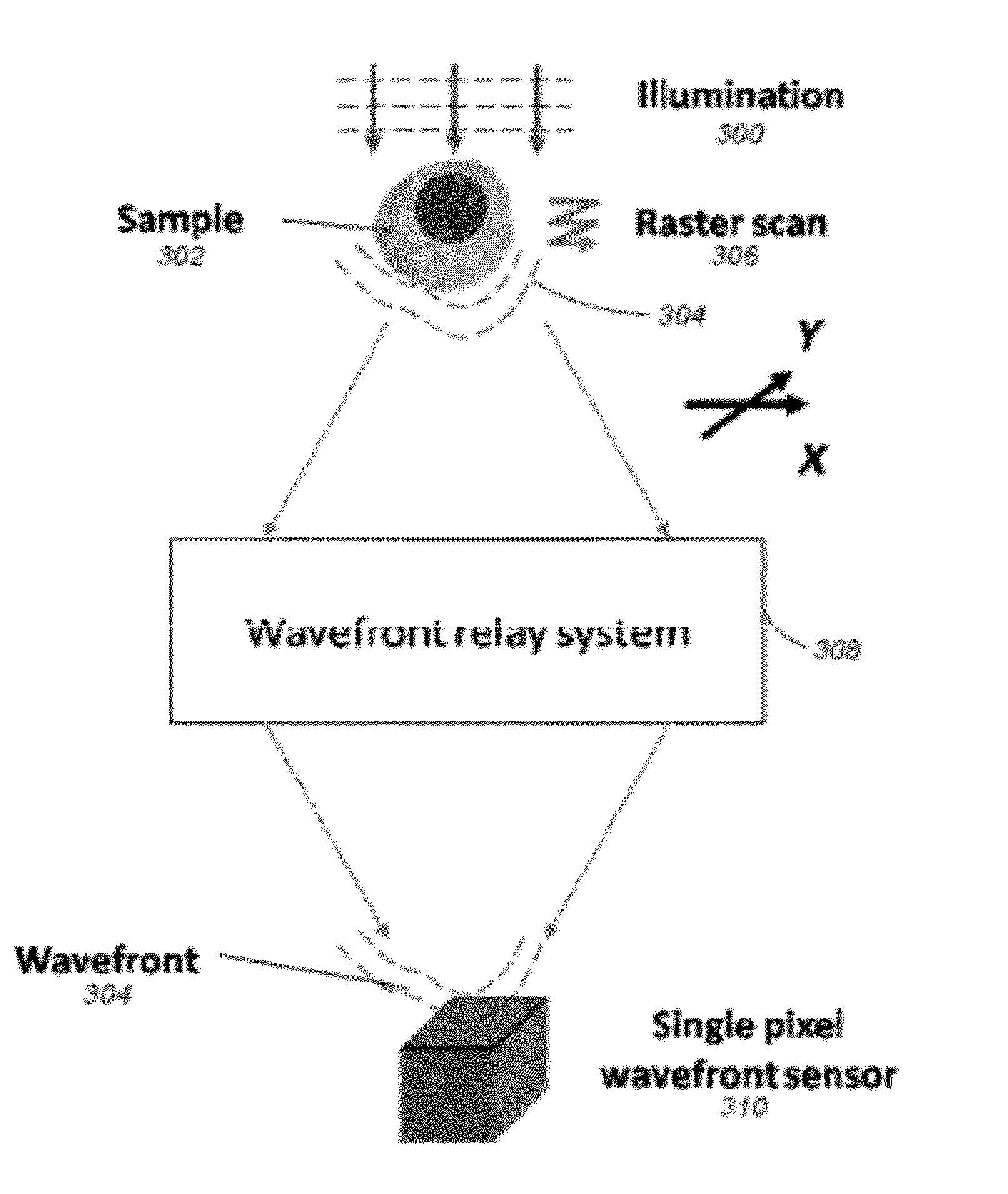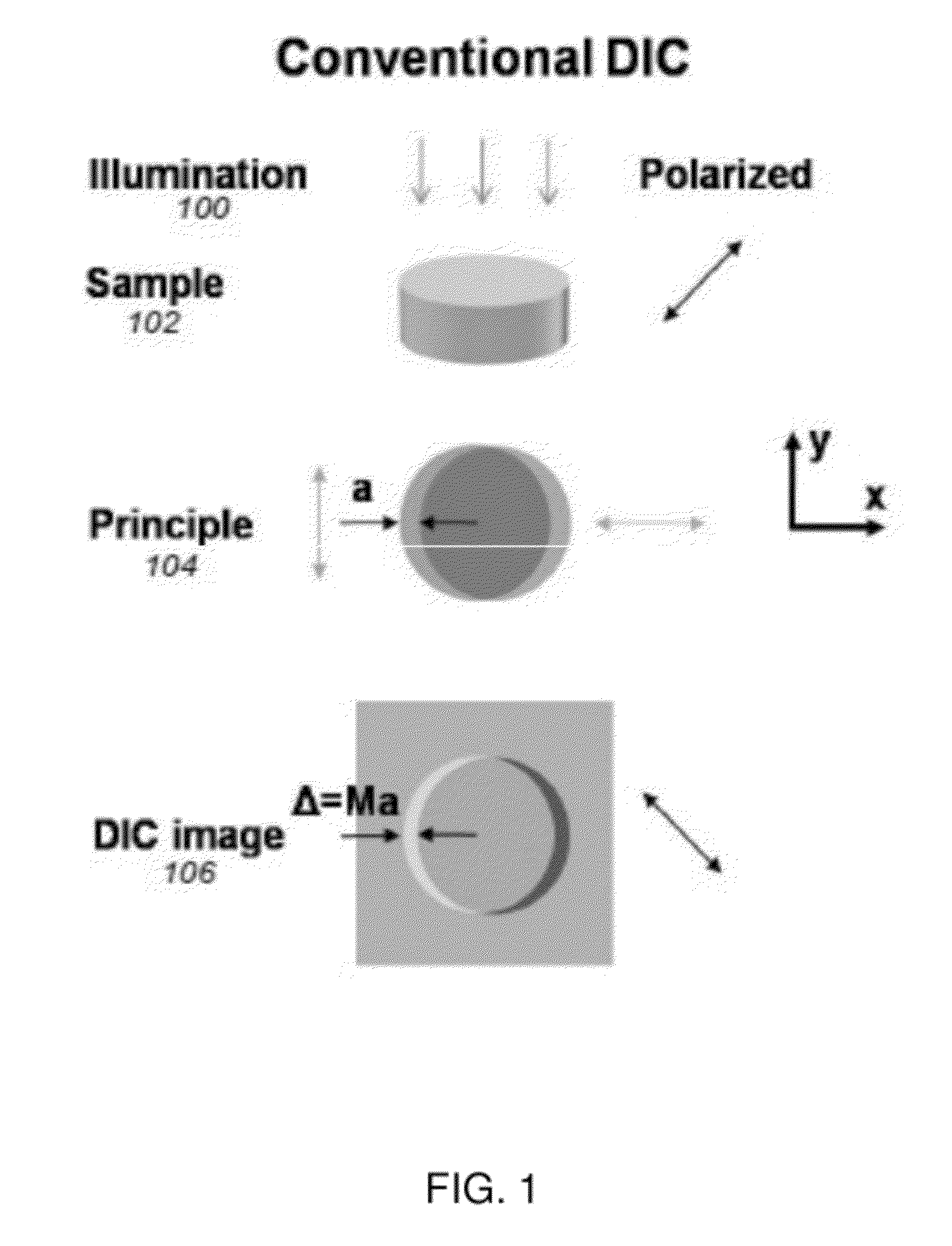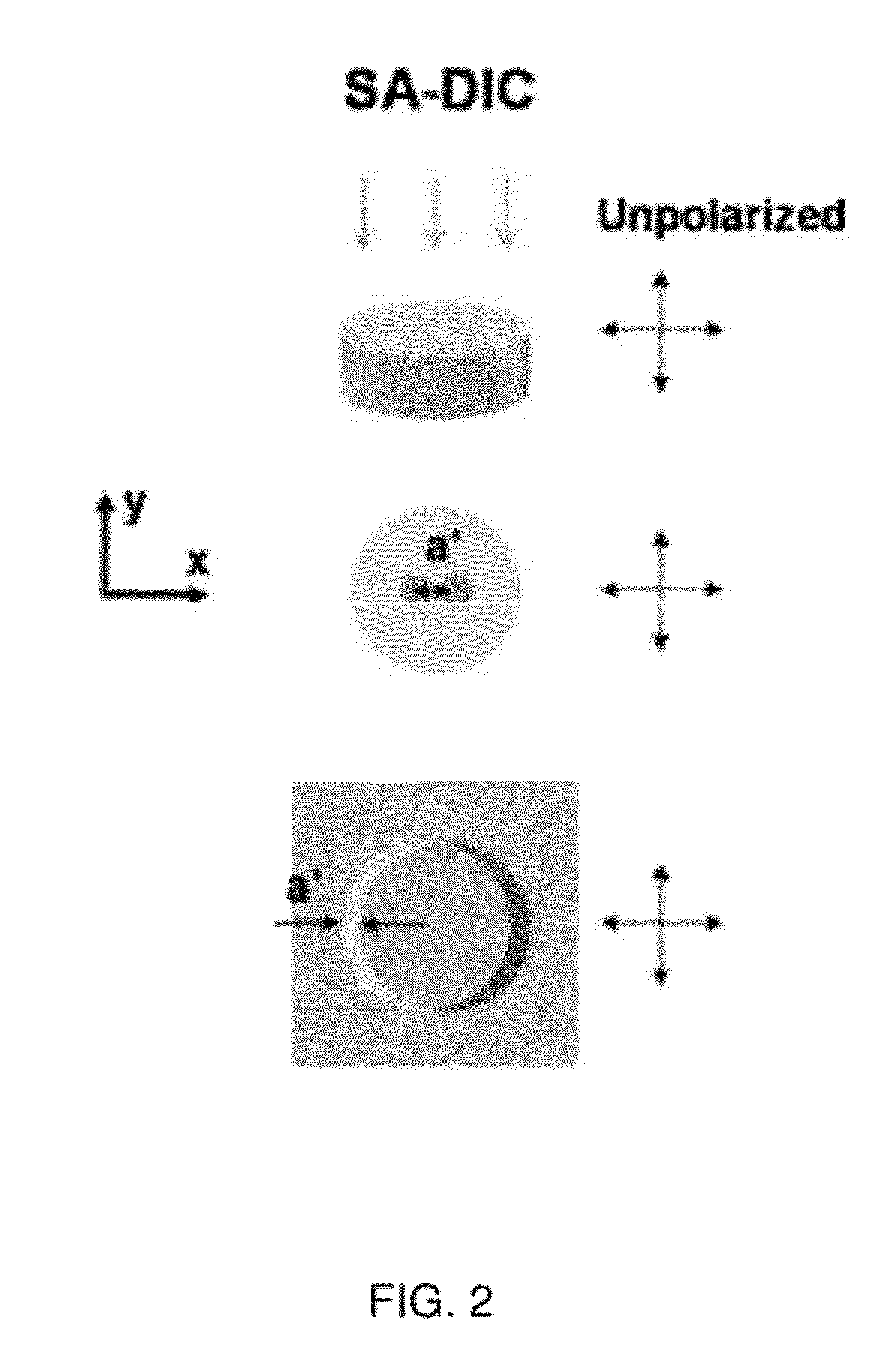Quantitative differential interference contrast (DIC) microscopy and photography based on wavefront sensors
a technology of differential interference contrast and wavefront sensors, applied in the field of microscopy and photography, can solve the problems of phase variation not being easily disentangled from amplitude variation, birefringent sample conventional dic images can have significant artifacts, and achieve good resolution
- Summary
- Abstract
- Description
- Claims
- Application Information
AI Technical Summary
Benefits of technology
Problems solved by technology
Method used
Image
Examples
Embodiment Construction
[0034]In the following description, reference is made to the accompanying drawings which form a part hereof, and which is shown, by way of illustration, several embodiments of the present invention. It is understood that other embodiments may be utilized and structural changes may be made without departing from the scope of the present invention.
[0035]Overview
[0036]One or more embodiments of the invention provide a mechanism to create a simple, quantitative and birefringent-artifact-free DIC microscopy or photography method with wavefront sensors.
[0037]Configuration of the Quantitative Differential Interference Contrast (DIC) Microscopy Based on Wavefront Sensors
[0038]Using conventional microscopy, a sample may be illuminated and a photodetector may be used to receive the diffracted light. Two types of information are desirable based on the illumination—(1) the number / distribution of photons; and (2) the direction / wavefront slope / phase gradient of the photons. Conventional microscop...
PUM
 Login to View More
Login to View More Abstract
Description
Claims
Application Information
 Login to View More
Login to View More - R&D
- Intellectual Property
- Life Sciences
- Materials
- Tech Scout
- Unparalleled Data Quality
- Higher Quality Content
- 60% Fewer Hallucinations
Browse by: Latest US Patents, China's latest patents, Technical Efficacy Thesaurus, Application Domain, Technology Topic, Popular Technical Reports.
© 2025 PatSnap. All rights reserved.Legal|Privacy policy|Modern Slavery Act Transparency Statement|Sitemap|About US| Contact US: help@patsnap.com



